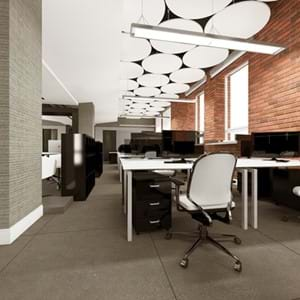Adjusting to the rise of activity-based working
Thursday November 24, 2016

Back in the old days, there was one rigid paradigm for doing work, and everyone had to adhere to it - they had no choice. People would simply come in to an office, sit at a desk and handle their responsibilities there from 9 to 5. There were no alternatives. It didn't matter whether the employee was feeling collaborative or independent, free-flowing or specifically goal-oriented; all the same, there was just a desk.
Business leaders have an understanding that different types of work are more effective in different environments.
Business leaders in the 21st century are starting to rethink that paradigm. They're developing an understanding that different types of work are more effective in different environments, so they're attempting to design workspaces that are better aligned with people's styles. In short, they're striving for an "activity-based" workspace.
The rise of activity-based work
Activity-based working environments have been especially visible in sectors like banking, technology, and digital media, where much of the talent has a keen interest in trying innovative new styles. Companies have begun introducing different sorts of office environments such as quiet rooms, dynamic, open plan, artistic areas to inspire creativity and social integration as well as "hubs" for team collaboration.
This is different from the old model. A generation ago, you had a desk and tried to handle every task from there; the job adapted to fit the environment. Now, it's reversed. The environment adapts to fit the job.
How your company can make the transition
Are you considering making the transition to an activity-based environment at your company? Be forewarned - it's not something you can pull off overnight. It can be done, though. Simple Space advises planning the process thoroughly, breaking down the schedule into manageable parts and following a schedule. Maybe you'll introduce one new work environment per month over four months.
 Develop a clear plan for streamlining the work environment.
Develop a clear plan for streamlining the work environment.It's important to give your staff a suitable amount of time to learn their new environment and get used to being productive in it. Often, this process is smoothest when it's done piecemeal, giving people an opportunity to experience one new thing at a time.
Alongside creating an activity based work environment, the other thing you need to build a thriving business is people who will fit well into that kind of environment. The goal is to have an office and a staff that naturally go together.


























